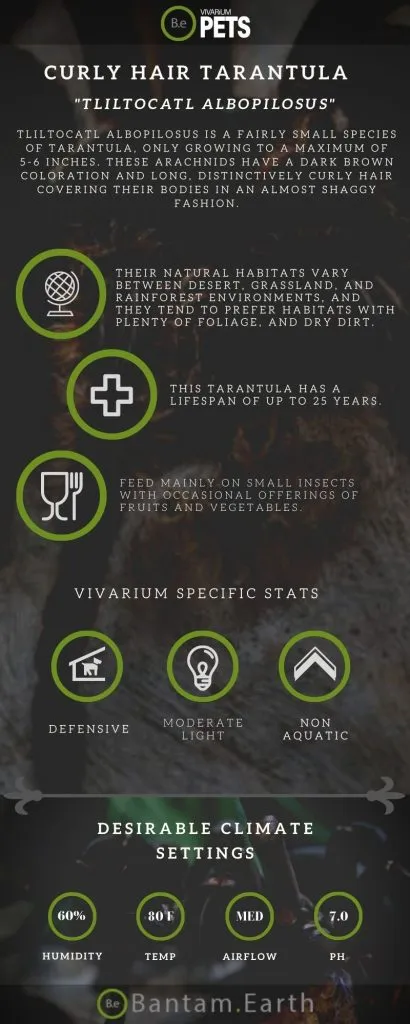Understanding Your Curly Hair Tarantula
The Curly Hair Tarantula (Tliltocatl albopilosus) is a popular and relatively docile species, making it a favorite among beginner tarantula keepers. Native to the tropical regions of Central America, these spiders are known for their distinctive, fuzzy appearance, characterized by their curly, golden-brown hairs. Understanding their natural habitat and behavior is crucial for providing them with the proper care, particularly when it comes to their feeding schedule. These tarantulas are ambush predators, meaning they wait for their prey to come to them, relying on their sensitive hairs and venom to subdue their meals. Their feeding habits are directly linked to their growth stage, environmental conditions, and overall health. A well-managed feeding schedule is vital for their health, development, and longevity. Therefore, a proper understanding of how to feed your Curly Hair Tarantula is essential for a happy and thriving pet.
Lifespan and Growth Stages
The lifespan of a Curly Hair Tarantula varies depending on the sex of the spider. Females can live for 10 to 20 years or even longer, while males typically live for only 5 to 10 years. Their growth occurs in stages, marked by molting, the process of shedding their exoskeleton. The frequency of molting decreases as they mature. Young tarantulas, or spiderlings, molt more frequently, sometimes every few weeks or months, whereas adults molt less often, maybe once a year or even less. Each stage of growth has different feeding requirements. Recognizing these stages and adjusting the feeding schedule accordingly is crucial for optimal growth and health. It’s important to monitor your tarantula’s size, appearance, and molting frequency to tailor their diet appropriately.
Spiderling Stage Feeding
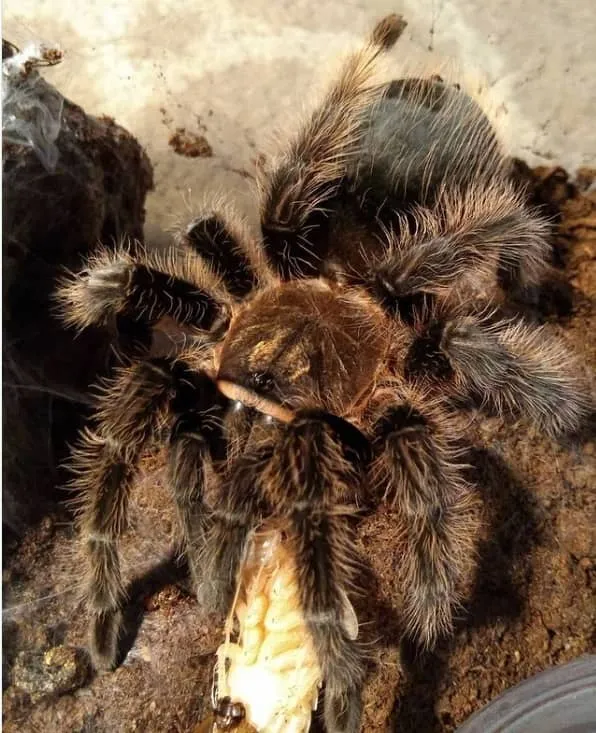
Spiderlings, the youngest stage of a Curly Hair Tarantula, require a more frequent feeding schedule. Due to their rapid growth, they need to consume more food relative to their size. At this stage, offer them small, flightless fruit flies or pinhead crickets. Feed them every other day, ensuring the prey is smaller than the tarantula’s body. Watch for any uneaten food, and remove it to maintain a clean and healthy enclosure. It’s essential not to overfeed spiderlings, as this can lead to health problems. Regular observation and a well-planned feeding schedule will help them grow steadily and healthily. Remember to provide a shallow water dish with fresh water, as hydration is critical during this growth phase.
Juvenile Stage Feeding
As your Curly Hair Tarantula grows into the juvenile stage, its feeding schedule should be adjusted. At this point, the frequency of feeding can be reduced. Feed juvenile tarantulas about twice a week. Appropriate food options include small crickets, mealworms, or roaches. The size of the prey should be proportionate to the tarantula’s size, ensuring the spider can easily subdue and consume it. Monitor the tarantula’s abdomen; a well-fed tarantula will have a slightly rounded abdomen, while an underfed one will have a noticeably small abdomen. Providing a varied diet will ensure your tarantula receives all the necessary nutrients. Also, ensure the enclosure has proper ventilation to prevent mold and mildew growth due to uneaten food.
Adult Stage Feeding
Adult Curly Hair Tarantulas have the slowest metabolism and therefore require less frequent feeding. Feed adult tarantulas once every 1-2 weeks, depending on their size and appetite. Suitable food options include larger crickets, roaches, or even small pre-killed mice (only occasionally). Observe the tarantula’s abdomen to gauge their hunger; if the abdomen appears full and round, it’s well-fed. Overfeeding can lead to health issues, including obesity and reduced lifespan. It is important to always have fresh water available in a shallow dish. For older adults, reduce feeding frequency further, and always remove any uneaten food to maintain a clean and healthy environment. Proper care and regular monitoring are essential for the well-being of adult Curly Hair Tarantulas.
Factors Affecting Feeding
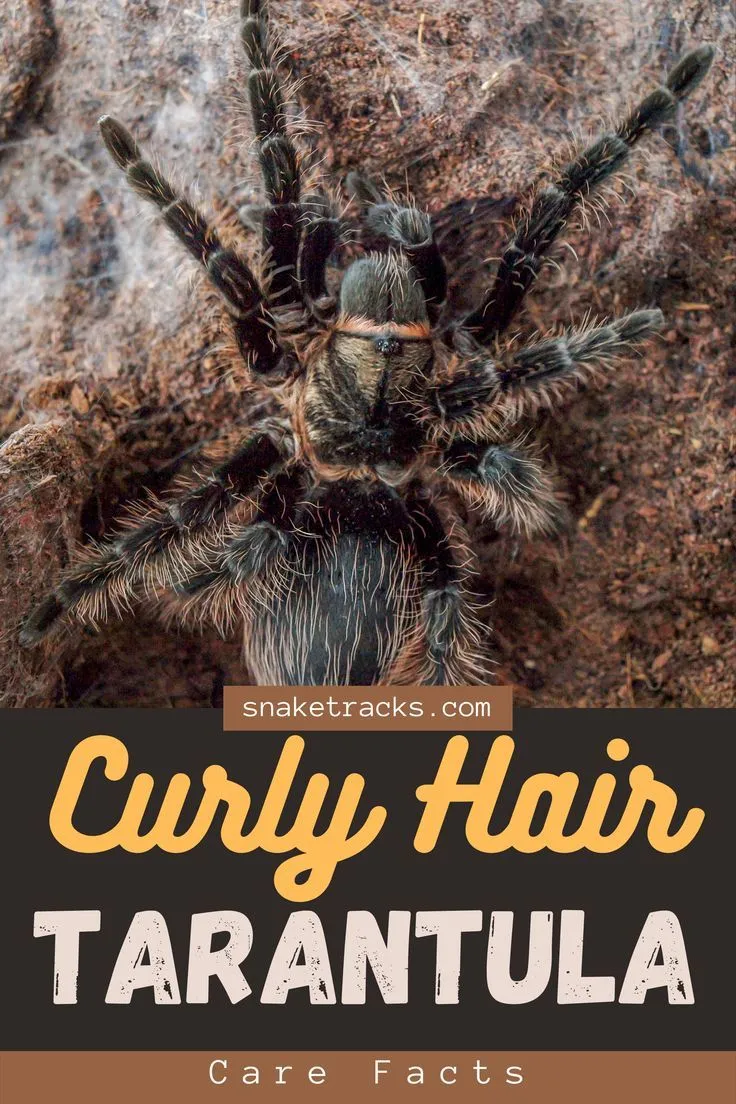
Several factors can influence your Curly Hair Tarantula’s feeding habits and schedule. Understanding these factors helps in adjusting the feeding regime to ensure your pet remains healthy and thriving. The environment and the spider’s physiological state play significant roles. Adjustments to the feeding schedule are necessary to ensure the tarantula is comfortable and well-fed, but not overfed. Careful observation and appropriate adjustments are key to proper tarantula care.
Temperature and Humidity
Temperature and humidity levels in the enclosure significantly impact a tarantula’s metabolism and appetite. Higher temperatures typically increase the metabolism, leading to a greater appetite. Conversely, if the temperature is too low, the tarantula may eat less or refuse food altogether. The ideal temperature range for a Curly Hair Tarantula is between 75-85°F (24-29°C). Humidity levels between 65-75% are also crucial for molting and overall health. Ensure these levels are maintained. Use a heat source like a heat mat or a ceramic heat emitter, and mist the enclosure regularly to maintain the proper humidity. Monitor the temperature and humidity with a reliable thermometer and hygrometer. Adjust the feeding schedule based on these environmental conditions. During periods of high temperature, you might observe an increased appetite, and during cooler periods, the tarantula may eat less.
Pre-Molting and Molting
Before molting, a Curly Hair Tarantula will often lose its appetite and may become reclusive. This is a normal part of their growth process. During this time, the tarantula’s abdomen may darken, and it might spend more time on its back. It is crucial not to offer food during pre-molt, as the tarantula will likely not eat it. The molting process is stressful, and the tarantula needs to conserve energy. Once the tarantula has molted, wait a few days before offering food, as their new exoskeleton will need time to harden. When you resume feeding, start with a small meal and gradually increase the size of the prey as the tarantula recovers. Do not disturb the tarantula during the molting process. Provide a humid environment to assist the molting process. Regular observation will help you recognize the signs of molting and adjust the feeding schedule accordingly.
Choosing the Right Food

Selecting appropriate food is vital for your Curly Hair Tarantula’s health and well-being. The diet should be varied and nutritious to ensure the tarantula receives all the necessary vitamins and minerals. The size and type of food should be appropriate for the tarantula’s size and growth stage. Always ensure the prey is free from pesticides and other harmful substances. A well-balanced diet will help your tarantula grow and thrive. The following points will provide detailed information on suitable feeder insects and the importance of prey size and quantity.
Feeder Insects Options
Various feeder insects can be offered to Curly Hair Tarantulas. Crickets are a common and readily available choice, providing a good source of protein. Mealworms are another option, but they should be given in moderation due to their high chitin content. Roaches, such as dubia roaches, are an excellent food source, offering high nutritional value. Ensure that the feeder insects are gut-loaded before feeding them to your tarantula. Gut-loading involves feeding the insects nutritious food, such as vegetables and fruits, a day or two before offering them to the tarantula. This enhances the nutritional value of the prey, providing your tarantula with essential vitamins and minerals. Always supervise feeding and remove any uneaten insects to prevent stress to the tarantula and to maintain a clean enclosure. Diversity in feeder insects ensures a more balanced diet for your Curly Hair Tarantula.
Prey Size and Quantity
The size of the prey should be appropriate for your tarantula’s size and growth stage. Generally, the prey should be no larger than the tarantula’s body size. Spiderlings require smaller prey, such as flightless fruit flies or pinhead crickets. Juveniles can eat small crickets or mealworms, while adults can handle larger insects such as adult crickets, dubia roaches, or, occasionally, pre-killed mice. The quantity of food also depends on the size and appetite of the tarantula. Offer one or two insects per feeding for spiderlings and juveniles. For adults, offer a few insects every 1-2 weeks. Always monitor your tarantula’s abdomen; if it appears full, reduce the amount of food offered. Regular observation helps you adjust the prey size and quantity according to your tarantula’s specific needs. Ensuring that the prey is appropriate in size and quantity is key to a healthy diet.
Feeding Frequency
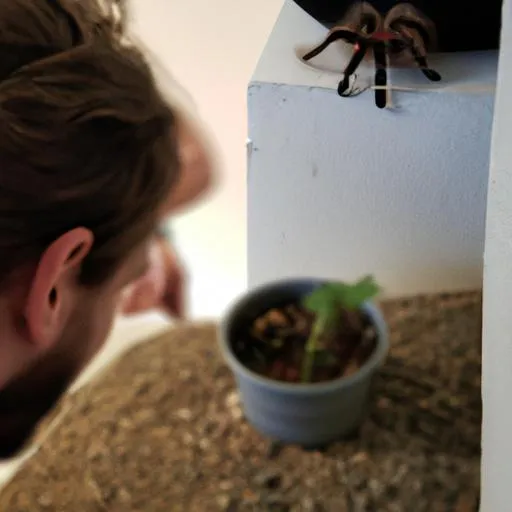
The frequency of feeding is crucial for the health and development of your Curly Hair Tarantula. The feeding schedule varies based on the spider’s age and growth stage. Following a proper feeding schedule ensures your tarantula receives the right amount of nutrients without overfeeding. Regular observation of your tarantula and adapting the feeding schedule accordingly is essential for optimal care. Consistent monitoring is necessary to maintain their health and longevity. This section will provide a detailed guide on how to set up a feeding schedule, how to create a routine, and how to monitor your tarantula’s feeding habits.
Setting Up a Feeding Schedule
Establishing a consistent feeding schedule is essential for your Curly Hair Tarantula’s well-being. For spiderlings, feed every other day. Juveniles should be fed twice a week, while adults need feeding only once every 1-2 weeks. Consistency helps in regulating the tarantula’s metabolism and growth. Keep a record of when you feed your tarantula to monitor its eating habits. Adjust the schedule as needed, based on the tarantula’s appetite and molting cycle. Prepare the food in advance by gut-loading insects or thawing mice. This ensures you are always prepared. A well-organized feeding schedule promotes the spider’s health and helps prevent underfeeding or overfeeding. Careful planning and adherence to the schedule will contribute to a healthy environment for your pet.
Creating a Feeding Routine
Creating a consistent feeding routine reinforces the feeding schedule and aids in the spider’s health. Choose specific days of the week for feeding. For instance, feed juveniles on Tuesdays and Fridays. Always feed at the same time of day to help the tarantula anticipate its meal. A routine reduces stress and makes it easier to monitor your tarantula’s eating habits. Make sure the tarantula’s environment is conducive to eating. Provide a clean enclosure with fresh water. Remove any uneaten food within 24 hours to maintain hygiene. A well-established routine will provide structure and a sense of security for your Curly Hair Tarantula. Proper routine is a critical aspect of tarantula care, supporting their well-being.
Monitoring Your Tarantula
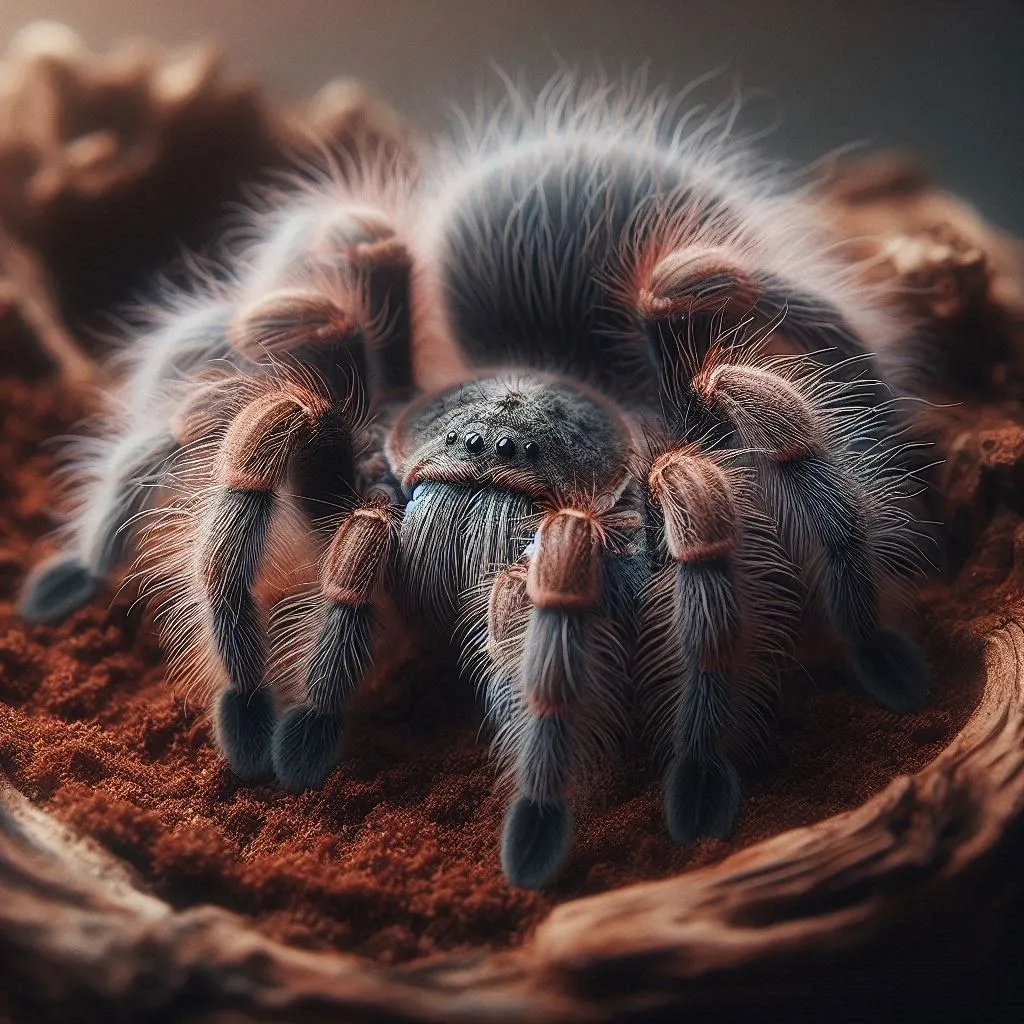
Regular monitoring of your Curly Hair Tarantula is crucial for ensuring its health and well-being. This includes observing its feeding habits, overall behavior, and the condition of its enclosure. Monitoring helps in detecting any potential health issues early on and allows you to adjust the care regime as needed. The following sections will cover what to look for in a healthy appetite, how to address instances of refusal to eat, and common mistakes to avoid. Being vigilant and knowledgeable about the behaviors of your Curly Hair Tarantula will improve your ability to care for it effectively.
Recognizing a Healthy Appetite
A healthy Curly Hair Tarantula typically exhibits a strong appetite, eagerly seizing prey when offered. The abdomen should be slightly rounded, indicating it is well-fed. Observe the tarantula’s behavior; a healthy tarantula will actively hunt and consume its food. However, a lack of appetite can sometimes be normal, especially before molting. A healthy tarantula is active and responsive to its environment. Look for consistent eating patterns. Regular monitoring of these behaviors will help you to ensure the well-being of your pet. Note the frequency and amount of food consumed and also make a note of their general activity levels. Any deviation from the norm should prompt a closer look and potential adjustments to their care.
Dealing with Refusal to Eat
If your Curly Hair Tarantula refuses to eat, there could be several reasons. First, check the temperature and humidity levels; ensure they are within the recommended range. Secondly, the tarantula may be in pre-molt, which is a common reason for refusing food. Do not offer food during this time. Check the enclosure for potential stressors, such as loud noises or vibrations. Make sure the enclosure is clean and free of parasites. If the tarantula continues to refuse food for an extended period, consult a veterinarian or an experienced tarantula keeper. Monitor for any signs of illness, such as lethargy or abnormal posture. Provide fresh water. Remain patient and avoid forcing food. Addressing the underlying cause and observing the tarantula’s behavior can help get it eating again.
Common Feeding Mistakes
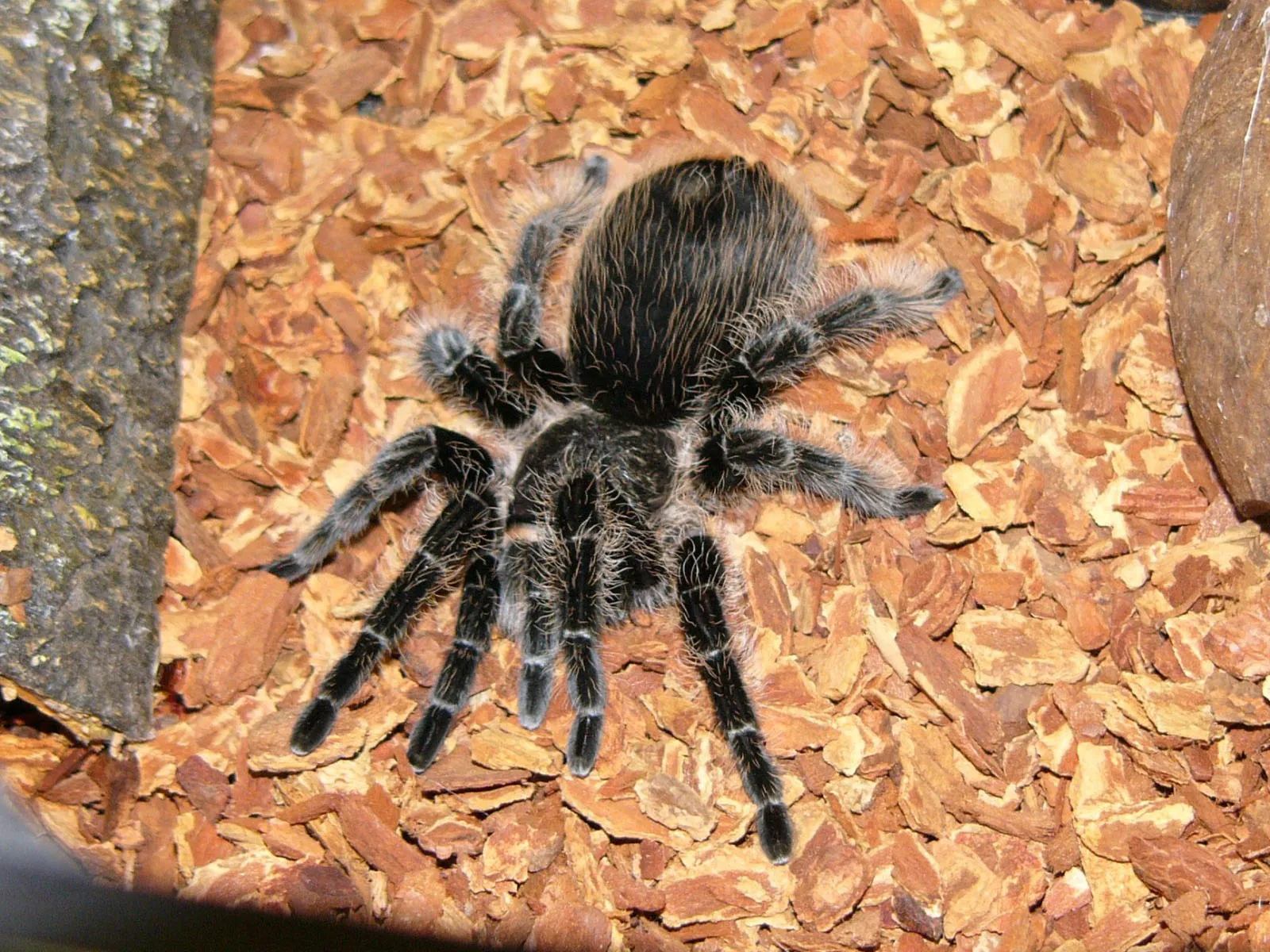
Avoiding common feeding mistakes is crucial for maintaining your Curly Hair Tarantula’s health. Overfeeding and offering inappropriate prey can lead to serious health issues. Understanding and avoiding these mistakes ensures your pet’s well-being and longevity. Proper feeding habits and an understanding of the issues to avoid are essential to responsible pet ownership. The following will address the most frequent errors to avoid when feeding your tarantula.
Overfeeding
Overfeeding is a common mistake that can lead to health problems in Curly Hair Tarantulas. Overfeeding causes the tarantula to become obese, which can shorten its lifespan. A tarantula’s abdomen should be slightly rounded, not excessively large. Avoid feeding more often than recommended for the tarantula’s life stage. Always remove uneaten food within 24 hours to prevent overeating and the spread of disease. Monitor the abdomen size, adjusting the feeding frequency as needed. Avoid feeding prey that is too large, as this can cause the tarantula difficulty consuming it. Properly monitor your tarantula to ensure that it’s getting the appropriate amount of food.
Incorrect Prey Size
Offering prey that is too large is another common feeding mistake. The prey should be no larger than the tarantula’s body. Overly large prey can be difficult for the tarantula to subdue and consume, leading to stress and potential injury. If the prey is too big, the tarantula might refuse to eat. Ensure that the feeder insects are the right size. Adjust the size of the prey as the tarantula grows. Always monitor the tarantula during feeding to ensure it can handle the prey. Choose prey that is proportional to the tarantula’s size. This will ensure the tarantula can eat safely and efficiently, preventing issues. Correct prey size is a key to the health and development of your Curly Hair Tarantula.
Maintaining a Healthy Habitat
Maintaining a healthy habitat is essential for your Curly Hair Tarantula’s well-being, complementing the feeding schedule. A well-maintained environment reduces stress, promotes good health, and ensures a comfortable life. The enclosure should replicate the tarantula’s natural habitat, providing the right temperature, humidity, and substrate. Proper hygiene and regular cleaning of the enclosure is critical. Proper care of the habitat will contribute significantly to the health, longevity, and overall happiness of your Curly Hair Tarantula. The right habitat and feeding practices will ensure your tarantula thrives. Cleanliness and a well-balanced environment are fundamental to their health and well-being.
